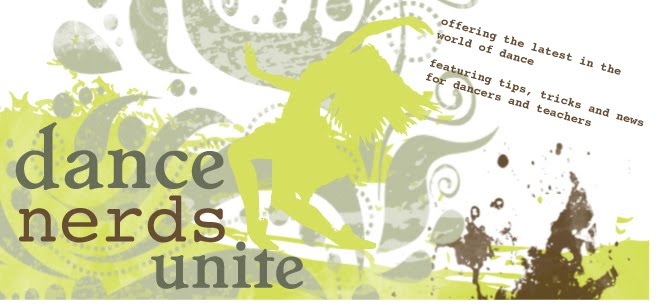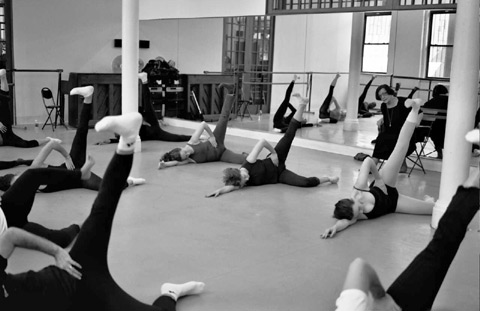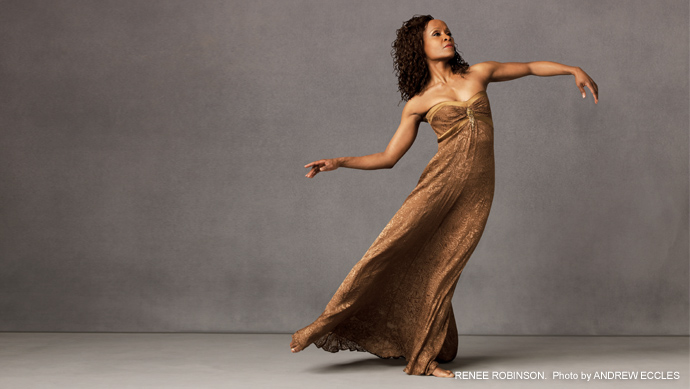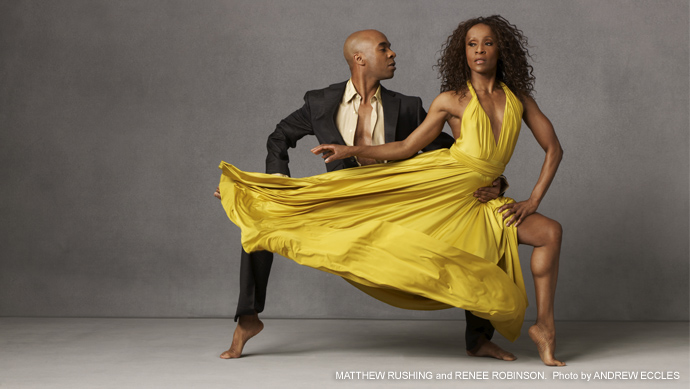Us dancers are so visual, so it always nice to come across fantastic dance photography. Check out this eye candy I found, dancers posing in everyday situations, by photographer Jordan Matters. "Dancers Among Us" So creative!
http://www.stumbleupon.com/su/2BSWjP/www.myphotographytutorials.com/gallery/photos-of-professional-dancers-in-everyday-situations
Wednesday, November 30, 2011
Thursday, October 13, 2011
Hyperextended? What to do...
I have several students in my classes who are naturally hyperextended. It's such a beautiful aesthetic in ballet, but man is it bad on the knees! They are constantly dealing with knee pain and swelling, and one of them asked if I knew how to fix it. I told her I thought she wasn't supposed to straighten her knees all the way, which for a hyperextended person means locking your knees, but I wasn't 100% sure. So, I consulted the experts, a.k.a. Dance Magazine. This article thankfully confirms what I thought and told my student, and it describes what is exactly going on in a hyperextended knee.
I also learned that hyperextension is a kind of made up condition in dance. In the medical field, it's used to describe an injury, not a natural condition (see: Mayo Clinic). That isn't addressed in the Dance Magazine article, but it at leasts helps us dancers and teachers know how to fix it! Check it out: http://www.dance-teacher.com/content/hyperextension-and-bowleggedness.
Labels:
Dance Magazine,
Hyperextension,
knees,
pain
Long break...
Hello to all my loyal readers! I have taken a very long break, and I apologize for dropping off the face of the earth! I got in a bad car accident while eight months pregnant, and from there, blogging was my last priority. Now things are back on track and I'm doing great, just still very busy as the SAH mom of a toddler and baby, while teaching dance at night. Thanks for sticking around and I hope to continue to offer you helpful tips and dance advice!
~ Sara
~ Sara
Monday, February 7, 2011
Interview with Zena Rommett
Interview with Zena Rommett, creator of the Rommett Floor-Barre Technique
By Rachel Rabkin
March 20, 2003
Recently, after taking one of Zena Rommett's classes at Steps on Broadway and 74th Street, I sat down with her, her daughter Camille Rommett, and a long-time student of the Floor-Barre Technique. There at the studio's sunny second-floor café, the three of us talked about Rommett's background, philosophies, and her revolutionary teachings.
Rachel Rabkin: When did you start taking ballet?
Zena Rommett: I started dancing when I was 16.
RR: When did you feel that there was a need for your Floor-Barre technique, which focuses on aligning, strengthening, and lengthening dancers' bodies?
ZR: I had dance scholarships and had some of the best teachers but I felt I never got the basics. I had fantastic facilities and was put into professional classes right away, but I know what it is to go to class and not know what it's all about. I felt the need to slow things down and refine ballet technique. That was about 45 years ago.
RR: Do you think that the basics are still getting lost in dance classrooms today?
ZR: I don't approve of what's going on in teaching today. I see very little quality except from some of the older master teachers. There is no artistry. I see seven- and eight-year-old children in pointe shoes with injuries, and they have no basics. My work, on the other hand, strengthens the joints and places them correctly so they can avoid injuries and train for many more years. The basics, though, in general, are lost with everything-not just dance-with music and art too. For the most part, the master teachers are gone. Everyone is teaching these days, and everything gets washed down. There is no longer the discipline to repeat basic steps over and over again. Everything has deteriorated. That's why I want to make an impact on teaching.
RR: Has your Floor-Barre Technique changed and grown over the years?
ZR: I develop it all the time. Now I am gearing it more toward therapy-toward injury prevention and rehabilitation. The technique is also getting more specific. Constantly refining the alignment corrects so many problems that dancers have.
RR: What is the most satisfying part of teaching your technique?
ZR: It is most satisfying when the bodies I work with become really beautiful bodies-like sculptures. It is also most satisfying to see how the student feels.
RR: How quickly can a student expect to see and feel results?
ZR: Right away.
RR: What is your biggest struggle in getting the word out about your teachings and your foundation?
ZR: The biggest struggle is lack of money. We've never had any marketing or advertising. It has all been word of mouth. I've been to Taiwan, Germany, Russia, Italy, California, and all over teaching. But unlike Pilates, which has wonderful marketing and is involved in selling machines, people just began coming to my classes. When I used to teach on West 3rd Street, some people would say, 'That woman is far out.' But people kept coming-dancers like Judy Jamison, Larry Rhodes, Lar Lubovitch, Melissa Hayden, and students of Balanchine and Martha Graham.
RR: Speaking of Pilates. I heard that Pilates has been influenced by your technique. Have you picked up anything from Pilates?
ZR: Absolutely not. I am a purist.
RR: I hear that you are working on a book. When will that be available?
ZR: Yes. I have been working on a book with a writer for about three years. It should come out soon. My philosophy has become clearer over the years and I want the book to reflect that.
RR: When did you start selling Floor-Barre videos? Have they been well received?
ZR: In 1991 we put out our first video. Now we have over three videos and they sell. We don't even advertise them and they sell. Next year we are coming out with a video for non-dancers-for business people, athletes, and senior citizens.
RR: How many teachers are now certified to teach your technique?
ZR: About 60 teachers throughout the world.
[Teachers who would like to apply for certification in Floor-Barre Technique can do so now. A certification course taught by Zena will take place on April 15th-18th and August 14th-17th 2003 at the New York Open Center. For more information call 212-633-0352, e-mail floorbarre@hotmail.com, or log on to www.floor-barre.org.]
RR: What would you like to see happen with your technique in the future? What is your dream?
ZR: It would be wonderful to see the technique being taught everywhere-in schools and studios everywhere. I'd also like to see my technique being used in the world of sports. I have the highest admiration for Tiger Woods. Now, he has placement. I would like to help him with his knee injury. I'd like to work with ice skaters and gymnasts also so they can apply the teachings I've refined to their bodies. We've influenced the ballet world and the modern dance world. We'd like to take it a step further and make our mark on sports.
Zena wasn't the only ones talking. Her student and her daughter, Camille, were also forthcoming with praise for Zena.
Student: I don't know if I've ever met a teacher like Zena, who cares as much about what she's teaching. She's focused on her work and carrying it through. She is a teacher's teacher. The more you take her classes, the easier dancing becomes. Dancing is very simple if you follow what Zena says because your center becomes solid.
I think everyone should take Floor-Barre, from senior citizens to children. I don't even dance anymore but I take Zena's classes for overall well being and for injury prevention. I look better, I feel better. My body is healthy, and strong.
Camille: Zena is an original. She is one of a kind, and she has a fantastic eye for correcting alignment. I am a constant witness to all of the positive feedback she gets wherever she goes. She truly has an unexplained gift to see and heal the body. Joffrey used to say that Zena could see through a brick wall.
My mission with the Zena Rommett Dance (Association) Foundation is to document the work and preserve the technique in its purity.
Zena Rommett's Floor Barre Technique
In the previous post, I wrote about Alvin Ailey dancer, Renee Robinson, who swears by Zena Rommett's Floor Barre Technique, and wanted to delve into more detail about it. Zena, a ballerina who also danced on Broadway, started this technique in 1968, and it is still going strong today.
According to the website, "By utilizing the floor, and without the stress of gravity associated with ‘standing’ at the ballet barre, dancers learn to align their bodies, lengthen their muscles, strengthen their joints, and fine-tune their movements. Floor-Barre® makes it possible for dancers to execute classical ballet movements with principles of alignment which are anatomically correct, and by using only the appropriate muscles...Over the past 50 years, Zena Rommett has earned the respect of the medical profession as a pioneer in injury prevention and rehabilitation."
Anyone can get certified, and the next certification seminar will take place this August in NYC. For more information, visit http://www.floor-barre.org/Floor-Barre/CERTIFICATION.html
This video is a great overview of what the technique is all about.
Here is an excerpt from one of the DVD's, which can be purchased on the website.
Sunday, February 6, 2011
How to Take Care of Your Dancing Body
Renee Robinson, who in her 40s is still dancing and performing with Alvin Ailey, keeps her body in top condition by using Zena Rommett's Floor Barre technique, Gyrotonics, juicing, and eating a very healthy diet of whole foods, fruits and vegetables. In this article from Dance Magazine, Technique My Way, she delves into her daily routine, which can help dancers of all ages learn how to take care of their bodies so they last for an entire career, and not just a rehearsal.
In the article, Renee says she enjoys Zena Rommet's Floor Barre because "lying down relieves so much pressure and helps you avoid gripping while you work correct alignment." For her, Pilates made her body tighter, although she suggests that dancers try different exercise methods to find the one that works for them. She also recommends regular cardio exercising, which helps especially for "stamina-intensive" ballets. And there again, she has created own regimen, adjusting for her age and what her body at 40 can handle.
Renee places a lot of value upon really being in-tune with your body, saying that young dancers have a tendency to not listen to their bodies and take the time to reflect. Lastly, she says there is nothing more important than a good nights' sleep!
Saturday, February 5, 2011
Communication Boundaries with Students
As a teacher, I've found it difficult to know where to draw the boundaries of communication outside the studio with my dance students, especially now with the popularity of Facebook and texting. For me at least, the only time I need or want to communicate with my students is when it's dance-related - to send them an article, pump them up for competitions, or send a reminder. Of course, there are those who will abuse the boundary and communicate inappropriately with their students, so as a studio owner, it is prudent to set boundaries for your teachers and students.
In an article from Dance Teacher Magazine entitled "Business: Setting Boundaries," one of the studios recommends writing up a contract that both your teachers, students and parents sign so the boundaries are very clear. That same studio "forbids teachers from 'friending' students on Facebook," but created a Facebook page for the studio where the teachers and students could communicate online.
Diane Kelley's studio in West Boylston, MA has a code of conduct which "states that contact with students (social networking, cell, online chat or phone calls) is prohibited outside of class without studio consent...with some flexibility allowed."
In an article from Dance Teacher Magazine entitled "Business: Setting Boundaries," one of the studios recommends writing up a contract that both your teachers, students and parents sign so the boundaries are very clear. That same studio "forbids teachers from 'friending' students on Facebook," but created a Facebook page for the studio where the teachers and students could communicate online.
Diane Kelley's studio in West Boylston, MA has a code of conduct which "states that contact with students (social networking, cell, online chat or phone calls) is prohibited outside of class without studio consent...with some flexibility allowed."
Yet another studio in Orem, UT, which has alumnus like Julianne Hough and Chelsie Hightower, has a very lenient policy on communication with students and creating such rules is a "foreign concept."
For more details, check out the article here: Business: Setting Boundaries.
For more details, check out the article here: Business: Setting Boundaries.
Friday, February 4, 2011
Learn from Another Studio's Success
If you have a competition team at your studio, check out this short interview with The Dance Center in Tuscaloosa, AL in Dance Teacher Magazine which offers sage advice and new ideas that could help freshen up your competition team and program. For the teachers, they suggest attending competitions as "an audience member" and "spend time observing the competition process."
For more details and some great information, read the article in its entirety here: http://www.dance-teacher.com/content/competition-high-five-rebecca-tingle-and-melissa-verzino
Ideas such as:
- Bring in guest teachers and choreographers
- Hold team-bonding activities like their annual lock-in
- Do community service projects such as adopting a family during the holidays
For more details and some great information, read the article in its entirety here: http://www.dance-teacher.com/content/competition-high-five-rebecca-tingle-and-melissa-verzino
Thursday, February 3, 2011
Teaching Arms in Tap
I was so excited to see this article in Dance Teacher Magazine this month: "Theory and Practice: Armed for Tap." It's all about teaching arms and how to use them effectively in tap. I see it all too often - tap students who haven't been trained in ballet but are quick and nimble on their feet, throw their performance out the window with poorly used arms. Dancer, director and choreographer, Ray Hesselink, offers the advice. Here is some of his choreography to enjoy!
Wednesday, February 2, 2011
Advice: How to Teach Adults
Thinking of building an adult dance program at your studio? Here's a fantastic article from Dance Teacher Magazine called "Feature: Night School" with advice on how to get started, attract adults, and teach them. It's fairly long, so here are some highlights:
- The Joffrey Ballet School attributes their 150% growth in the adult program to the weeklong seminars and intensive dance workshops they added to their calendar for adults.
- Most adult classes are between 6:30 and 9:00 p.m.
- Teachers are vital to an adult program's success, as adults are drawn to classes in which they love the personality of the teacher and connect with him or her. Connecting with each student on an individual level also keeps their interest high.
- Teachers should be highly aware of how an adult feels in class. It is challenging for an adult to try something new, or come back to ballet after a long time. Make sure your corrections are positive and constructive so they don't feel it's personal criticism.
- Safety is of utmost important as adult bodies are much more limited than that of children. Do not push them beyond what they can do or handle. This includes strengthening the core and including exercises that are gentle on the joints like the knees and hips, and take a longer time to warm up.
The Adorable Chelsie Hightower
Who doesn't love the quick-stepping, bubbly Chelsie Hightower? At just 21, she has achieved more success in a few years than some do in a lifetime - she just has that IT factor. From "So You Think You Can Dance" to "Dancing With the Stars", this article explores where she came from and how she got to where she is today. I love knowing how successful people worked to get to the top, and this article, "Face to Face: Chelsie Hightower" in Dance Teacher Magazine doesn't disappoint!
Amazingly, Chelsie won her first national ballroom title at age 11 after only dancing for two years prior to that. She says that all of her dance studio training in Orem, Utah prepared her for a professional career - "the biggest thing is learning that people will want to work with you if you're a good person, show up on time and have a good attitude."
Her future plans include opening her own dance studio an hour north of Orem that will include everything from competitive jazz and hip-hop to ballroom.
Friday, January 14, 2011
Can Turnout Be Improved? Advice from an Orthopedic Surgeon
So, what if your turnout is not naturally "good?" Not to worry - there are famous ballerinas who were known for bad turnout and still had great success. Ballerinas like Anna Pavlova, who is considered one of the greatest dancers of all time as a principal dancer for the Imperial Russian Ballet. There are plenty of other qualities besides turnout that make a dancer great - artistry, grace, strength, passion, flexibility, perseverance and ambition. Focus on the qualities that naturally set you apart and strengthen those rather than worrying about the qualities you can't change.
Click here to read the article in its entirety: http://dancemagazine.com/issues/January-2011/On-Dance-Injuries-The-Dancers-Hip
Wednesday, January 12, 2011
Focus on Your Head
So often I see dancers who neglect to use their heads and shoulders when dancing, or use them improperly. It is the difference between a beginner and advanced dancer - advanced dancers really dance with their whole bodies, making it look easy and natural. When just one part of the body is not used correctly, it can throw off the aesthetic and quality of the dancing. I have been working very hard in my classes lately to focus on the head and eyes, starting at the barre, and have seen great results. My dancers are finally dancing more in unison and their dancing has taken on a beautiful, new quality.
Here's an article to help teachers teach proper head and shoulder placement in class - "How to Use Correct Placement in the Head and Neck for Dancers". Another reference is a previous post, here on Dance Nerds Unite - "Improving Port De Bras" http://dancenerds.blogspot.com/2010/10/improving-port-de-bras.html
The four main bad habits the author says dancers make with their heads are:
Here's an article to help teachers teach proper head and shoulder placement in class - "How to Use Correct Placement in the Head and Neck for Dancers". Another reference is a previous post, here on Dance Nerds Unite - "Improving Port De Bras" http://dancenerds.blogspot.com/2010/10/improving-port-de-bras.html
The four main bad habits the author says dancers make with their heads are:
- Holding tension in or straining the neck
- Focusing the eyes in a different direction than the head
- Jutting the chin, or lifting it too far
- Throwing the head, rather than controlling movement
Check out the article at the link above for more info!
Labels:
correct head placement,
dance technique
Tuesday, January 11, 2011
More on Summer Study - Company School or Conservatory?
The main difference? Company schools offer you exposure to join the company, while conservatories offer small class sizes with individualized attention and a chance to join their year-round school. Company schools include San Francisco Ballet School, Miami City Ballet School, School of American Ballet, and any other school at a professional dance company. Conservatories include The Rock School for Dance Education, The Nutmeg Conservatory, the University of North Carolina School of the Arts, and Harid Conservatory.
Here, some San Francisco Ballet students share their summer intensive experiences at SFB.
Here is a video from The Rock School for Dance Education on their summer intensive.
Sunday, January 9, 2011
How to Teach a Pirouette
I loved finding this article and video at Dance Teacher magazine on how to teach pirouettes because it is definitely one of the most important skills a dancer needs to master. Here, former New York City Ballet soloist, Katrina Killian, shows just how to teach a Balanchine pirouette, which includes a straight back leg and all weight on the supporting front leg. For more details than the video provides, read the accompanying article: "Technique: Katrina Killian: How I Teach a Pirouette".
Video: http://dancemedia.com/v/4648
Monday, January 3, 2011
Fresh Choreography Ideas for Recitals
I think one of the hardest things to do year after year as a teacher is to come up with fresh and innovative choreography for recitals and competitions. It is key to that the choreography appeals to audiences who might not be dancers (like parents), appeals to dancers, challenges your students, pleases judges, and is different from last year! I just have to share this choreographer's work with you, as she has some very entertaining and creative pieces, that could give you the inspiration you need to tackle the 15 dances you have to choreograph for this year's recital!
I recently discovered her on YouTube as I was desperately searching for inspiration of my own, and found tons of her work there. Introducing...Kate Jablonski! She has her own dance company, Beyond Words, located in Westmont, Illinois. Here's her website with a video gallery of her best work. May you also be inspired!
http://www.beyondwordsdancecompany.com/gallery/
Jazz/Contemporary Warm-Up
I've been looking for new elements to include in my contemporary and jazz class warm-ups and came across this video that Dance Teacher Magazine featured back in September 2010 Technique: Shelia Barket: How I teach a warm-up. It's Shelia Barker's, a Broadway Dance Center teacher, jazz dance warm-up and includes some yoga-like poses (downward dog, squat) and is very relaxing. I know my students will love how it warms up the torso and back and helps all those muscles relax and prepare for technique.
Subscribe to:
Posts (Atom)
















